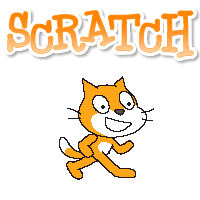
Last Wednesday marked my first day going into a nursery placement. During this year at the University of Dundee I and a 7 other training teachers have been given the opportunity to go out into a nursery setting in Dundee prior to our formal placement this coming March. This is for a research project proposed by 3 of my tutors. We will be going into our nursery placement one afternoon a week for 8 weeks.
This opportunity is to help me develop my skills as a practitioner by improving my communication skills through play with the young children and adults at my placement. I am also looking forward to developing my confidence working with this age range as I have had little experience in this area. I was lucky enough to work with Kindergarten children last March on my second year placement in Abu Dhabi and in a year one class during maths in Paris. However, I have never worked in a Scottish nursery setting and it will be interesting to develop my prior knowledge through this opportunity.
I was a little bit nervous heading out to my placement last Wednesday and of course ended up arriving way to early so I went for a little walk around the area before heading into the nursery. I was immediately welcomed by all the staff and given a small tour of the nursery. On first impressions the nursery space is lovely, there are lots of open areas for the children to play in with everything being (apart from door handles to the adult areas) at their height.
Upon arrival the children are able to play until they go to group time which is a quick register and then giving them a choice of activity that they would like to do today (although they aren’t restricted to this one activity all afternoon). They then go to their area and allowed to play completely at their leisure, the outdoor play area I was told is always open to the children and they are able to come and go as they please.
When we went into the free play part of the afternoon I did feel a little uneasy as I have always been in settings where there was more emphasis on a set structure. Even in my time in kindergarten the children were allowed to play wherever they wanted but they had set areas set up and everything was tied into something that they were learning that week (I learnt a lot about ants very quickly there). So to start with I wandered around the nursery not wanting to disturb anyones play, 5 seconds later I was then asked to read “Three Billy Goats Gruff”, my brain immediately went back to my lectures last year about reading in the early years and to the discussions we have had about reading to children in the ESW Book Club. I hope I did a good job!
I then seemed to spend the rest of my time outside doing a variety of things, mainly looking for bugs which was really great. The children were so fascinated to look under all the logs and into the nooks and crannies of the nursery. They got a bug jar to collect the beasties that they caught and investigate them further, once they were finished they gently released them back into the garden.
It was a fantastic first day at placement and since then I have been reflecting on my time there and coming up with questions and areas that I wish to explore further within my own practice. The main area I wish to look at is questioning, throughout the day I was speaking to one of the practitioners about the importance of extending the children’s learning through discussion. I really want to develop my skills at this as although I try and use “Bloom’s Taxonomy” and higher order questioning I am not confident at it. I also want to explore the structure of the day with the practitioners as I am interested seeing how they allow the children to explore a specific topic. But also how they allow the children to experience a range of things, as the children pick what they want to do what stops them from choosing the same thing over and over again?
I am thoroughly looking forward to going back after the October holidays.





